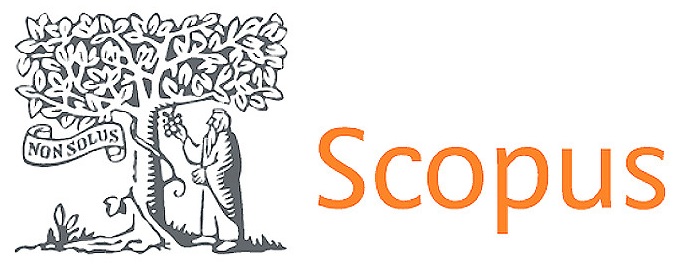Advancing Patient-Centered Care through AI-Driven Medical Informatics and Real-Time Health Data Analysis
DOI:
https://doi.org/10.56294/mw2024506Keywords:
Artificial Intelligence, Patient-Centered Care, Medical Informatics, Real-Time Health Data, Predictive AnalyticsAbstract
In the quickly evolving sector of healthcare, the marriage of artificial intelligence (AI) with medical technology has drastically revolutionised the way patient-centered care is given. By real-time health data analysis, AI-driven solutions enable healthcare professionals to provide more individualised, effective, proactive treatment. By means of its applications in real-time health data analysis and medical computing, this study explores how artificial intelligence might support patient-centered care enhancement. Big volumes of patient data including information from smart devices, clinical records, and medical images are handled by artificial intelligence algorithms including predictive analytics, natural language processing, and machine learning models. Along with helping clinicians make better judgements, these instruments increase patient involvement, happiness, and likelihood of excellent outcomes. The key advantage of artificial intelligence-driven medical informatics is that it can provide real-time patient health information to healthcare professionals so they may respond fast on new medical problems or probable hazards. Predictive models, for instance, may recommend certain treatment regimens, forecast the course of an illness, and identify potential issues before they become very major. Particularly for those who live in remote or poor regions, AI may also enable telemedicine and online monitoring systems, therefore helping to make healthcare more accessible. Moving the emphasis from reactive care to focused, preventive care helps AI-driven solutions empower individuals to take control of their own health. Better healthcare outcomes follow from simpler patient and healthcare worker collaboration made possible by combined use of artificial intelligence and medical computers. Using these technologies does, however, also present challenges like concerns about data security, the need for consistent procedures, and ensuring ethical usage of artificial intelligence in medical environments.
References
Yang, D.-M.; Chang, T.-J.; Hung, K.-F.; Wang, M.-L.; Cheng, Y.-F.; Chiang, S.-H.; Chen, M.-F.; Liao, Y.-T.; Lai, W.-Q.; Liang, K.-H. Smart healthcare: A prospective future medical approach for COVID-19. J. Chin. Med. Assoc. 2023, 86, 138.
Dewangan, N.; Vyas, P.; Ankita; Mandal, S. Smart Healthcare and Intelligent Medical Systems. In Computational Intelligence and Applications for Pandemics and Healthcare; IGI Global: Hershey, PA, USA, 2022; pp. 205–228. ISBN 978-1-79989-831-3.
Dong, A.; Guo, J.; Cao, Y. Medical information mining-based visual artificial intelligence emergency nursing management system. J. Healthc. Eng. 2021, 2021, e4253606.
Abdulkareem, K.H.; Mohammed, M.A.; Salim, A.; Arif, M.; Geman, O.; Gupta, D.; Khanna, A. Realizing an Effective COVID-19 Diagnosis System Based on Machine Learning and IoT in Smart Hospital Environment. IEEE Internet Things J. 2021, 8, 15919–15928.
Gupta, N.S.; Kumar, P. Perspective of artificial intelligence in healthcare data management: A journey towards precision medicine. Comput. Biol. Med. 2023, 162, 107051.
Jayaraman, P.P.; Forkan, A.R.M.; Morshed, A.; Haghighi, P.D.; Kang, Y.-B. Healthcare 4.0: A review of frontiers in digital health. WIREs Data Min. Knowl. Discov. 2020, 10, e1350.
Kumar, A.; Gond, A. Natural Language Processing: Healthcare Achieving Benefits Via Nlp. Sci. Prepr. 2023, 2023, 2–14. [
Kumar, Y.; Koul, A.; Mahajan, S. A deep learning approaches and fastai text classification to predict 25 medical diseases from medical speech utterances, transcription and intent. Soft Comput. 2022, 26, 8253–8272.
Aggarwal, N.; Ahmed, M.; Basu, S.; Curtin, J.J.; Evans, B.J.; Matheny, M.E.; Nundy, S.; Sendak, M.P.; Shachar, C.; Shah, R.U.; et al. Advancing Artificial Intelligence in Health Settings Outside the Hospital and Clinic. NAM Perspect. 2020, 2020, 1–26.
Lee, D.; Yoon, S.N. Application of Artificial Intelligence-Based Technologies in the Healthcare Industry: Opportunities and Challenges. Int. J. Environ. Res. Public Health 2021, 18, 271.
Javed, A.R.; Saadia, A.; Mughal, H.; Gadekallu, T.R.; Rizwan, M.; Maddikunta, P.K.R.; Mahmud, M.; Liyanage, M.; Hussain, A. Artificial Intelligence for Cognitive Health Assessment: State-of-the-Art, Open Challenges and Future Directions. Cogn. Comput. 2023, 15, 1767–1812.
Maddula, R.; MacLeod, J.; McLeish, T.; Painter, S.; Steward, A.; Berman, G.; Hamid, A.; Abdelrahim, M.; Whittle, J.; Brown, S.A.; et al. The role of digital health in the cardiovascular learning healthcare system. Front. Cardiovasc. Med. 2022, 9, 1008575.
Sarker, I.H. AI-Based Modeling: Techniques, Applications and Research Issues Towards Automation, Intelligent and Smart Systems. SN Comput. Sci. 2022, 3, 1–20.
Sennott, S.C.; Akagi, L.; Lee, M.; Rhodes, A. AAC and Artificial Intelligence (AI). Top. Lang. Disord. 2019, 39, 389–403
G. Umamaheswararao . (2015). The Role of Securities & Exchange Board of India (SEBI) towards Regulating Indian Mutual Funds. International Journal on Research and Development - A Management Review, 4(3), 8 - 17.
Poalelungi, D.G.; Musat, C.L.; Fulga, A.; Neagu, M.; Neagu, A.I.; Piraianu, A.I.; Fulga, I. Advancing Patient Care: How Artificial Intelligence Is Transforming Healthcare. J. Pers. Med. 2023, 13, 1214.
Hosny, A.; Parmar, C.; Quackenbush, J.; Schwartz, L.H.; Aerts, H. Artificial intelligence in radiology. Nat. Rev. Cancer 2018, 18, 500–510.
Hossain, E.; Rana, R.; Higgins, N.; Soar, J.; Barua, P.D.; Pisani, A.R.; Turner, K. Natural Language Processing in Electronic Health Records in relation to healthcare decision-making: A systematic review. Comput. Biol. Med. 2023, 155, 106649.
Published
Issue
Section
License
Copyright (c) 2024 Swati Kemothi, Sujayaraj Samuel Jayakumar, Swarna Swetha Kolaventi, Pratyashi Satapathy, Kollathur Sudheer, Gunveen Ahluwalia, Ansh Kataria (Author)

This work is licensed under a Creative Commons Attribution 4.0 International License.
The article is distributed under the Creative Commons Attribution 4.0 License. Unless otherwise stated, associated published material is distributed under the same licence.






